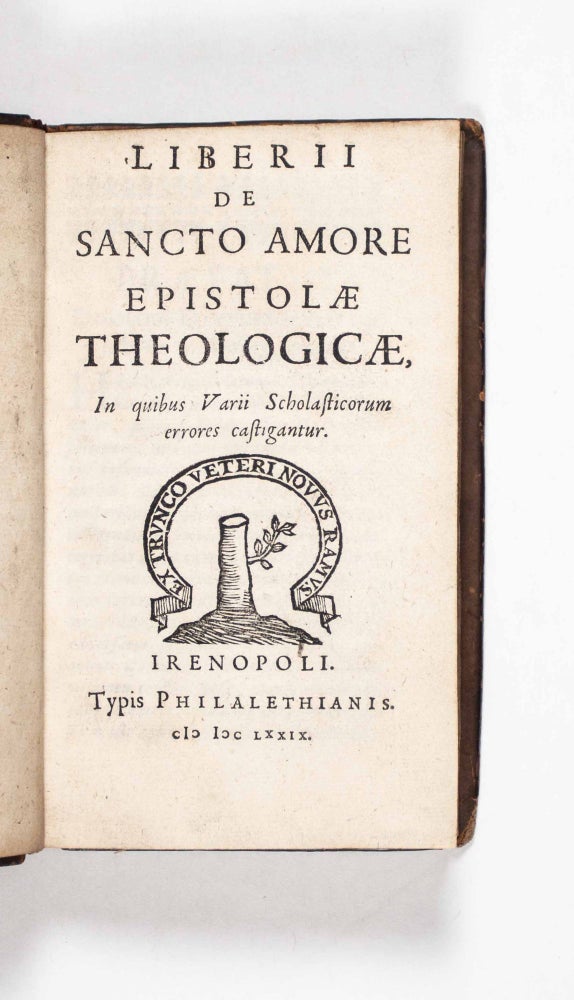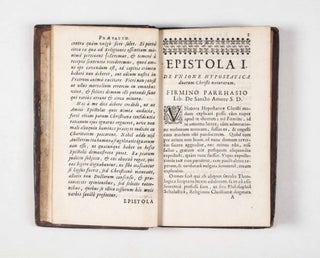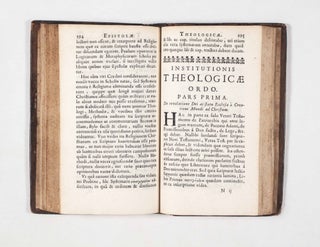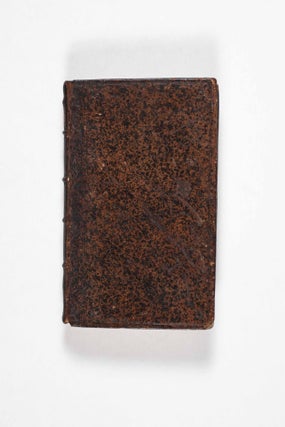A Large Dictionary English and Dutch, in two parts (Groot wordenboek der engelsche en nederduytsche taalen)... To Which Is Added a Grammar, for Both Languages
Amsterdam: The widow of Steven Swart / de Boers, 1708. Second edition. Hardcover. 2 parts, quarto. [24], 648, 92; [8], 680pp., extra engraved title; letterpress titles for each part in red and black. Expertly rebound in full vellum boards. Mild embrowning at early leaves, occasional faint dampstain at top margin. Else clean, crisp text in a superb, period-style binding.
Second edition of this pioneering dictionary by the lexicographer and historian, Willem Sewel, best known for his history of the Quakers (1717). Sewel was also an important translator who contributed the Dutch version of Hydrotaphia, and probably of Religio Medici, to the first Amsterdam edition of the Works of Thomas Browne, and later translated Boyle, Burnet, Congreve and Penn. Sewel’s Dutch-English dictionary followed that of Hexham (1647). "Sewel is more precise than Hexham … and generally distinguishes more meanings" (Osstelton). First appearing in 1691, six editions were published at Amsterdam by 1766. Along with Pieter Marin’s Dictionnaire complet françois et hollandaise (1701), and Frans Halma’s Le grand dictionnaire françois et flamand (1708), Sewel’s Dictionary was among the most important Dutch lexicons of the eighteenth century. “It is noticeable, in the history of Dutch dictionary-making, that the outstanding efforts have been bilingual” (Collison). Revised editions of Kiliaan’s Dutch-Latin Etymologicum teutonicae linguae (1574) were reissued as late as 1777. Indeed, the first substantial monolingual Dutch dictionary, Weiland’s five-volume Nederduitsch taalkundig woordenboek, did not appear until 1799-1810. "Sewel worked largely from an English–Latin dictionary, translating the Latin to Dutch, and from a Dutch–French dictionary, translating the French to English. The dictionary gained from Sewel's need in his translating work to include specialist terminology of a learned, legal, and ecclesiastical nature, where there might be no obvious Dutch equivalent words. The 1708 revised edition took about four years to prepare: the English–Dutch part was revised and supplemented on the basis of his recent translating work and the availability of a better English dictionary, while the Dutch–English part was more thoroughly revised. The revised dictionary remained the standard throughout the eighteenth century and formed the basis of John Holtrop's dictionary of 1789 (ODNB).
With a lovely engraved title by J. Goeree depicting three gentlemen scholars in an ornate private library with the seals of Britannia and Batavia mounted on the walls, French doors opened wide to the fountain and garden while a dutiful hound distains the frolicking ducks and listens in on the conversation. Nearly Fine. Item #49164
References: Alston, XIII, 95. Claes 1344. Collison, Dictionaries of English and Foreign Languages, p. 36. ESTC T132557. Kennedy 2841. N. E. Osselton, The Dumb Linguists: a Study of the Earliest English and Dutch Dictionaries (Oxford, 1973). P.G.J. van Sterkenburg, Het Woodenboek der Nederlansche Taal: “Het standaardwoordenboek der achttiende eeuw, zowel in Engeland als in Nederland”.
Price: $1,500.00




